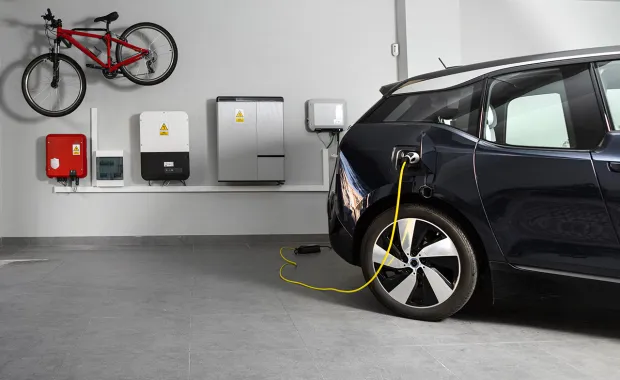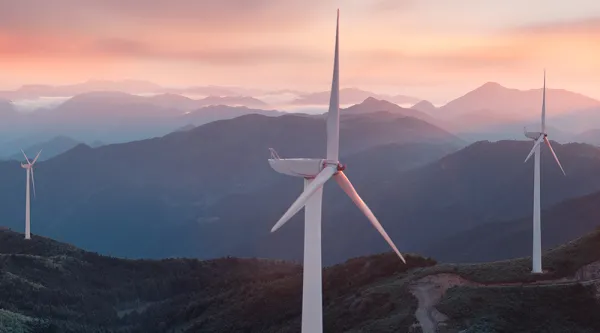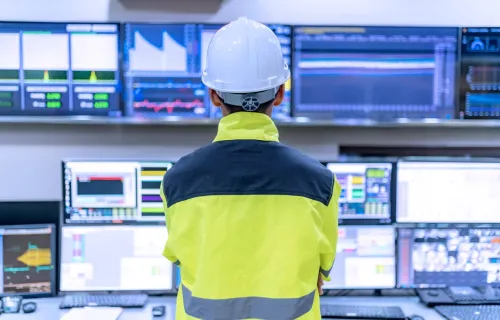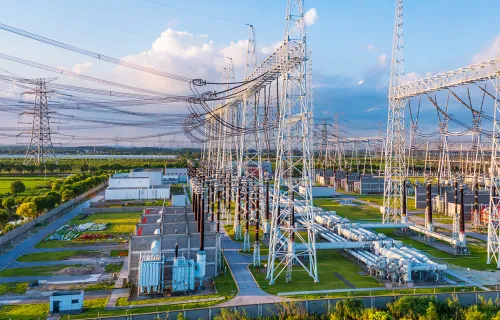La demande en énergie renouvelable augmente en réponse au besoin urgent de respecter les objectifs en matière de lutte contre les changements climatiques et de décarbonation. Toutefois, en raison de l’intermittence des énergies renouvelables, il est essentiel d’améliorer le stockage de l’énergie pour gérer efficacement l’offre et la demande, mettre en place des microréseaux et renforcer la résilience, la souplesse et la sécurité énergétique.
Selon M. Gopal, les avantages et le rendement du capital investi (RCI) du stockage de l’énergie peuvent être classés en trois grandes catégories en fonction de l’analyse de rentabilité et les cas d’utilisation.
Le stockage de l’énergie représente une avancée technologique importante qui offre des occasions de création de valeur exceptionnelles pour différents acteurs du marché. Il est d’ailleurs considéré comme un élément perturbateur de l’industrie. « Ce n’est pas le faible coût des énergies renouvelables lié, par exemple, à l’utilisation de panneaux solaires ou de batteries qui est en cause, mais le marchandisage du matériel informatique et des logiciels qui sont utilisés pour intégrer les énergies renouvelables dans une centrale électrique à commande numérique, explique toutefois M. Gopal. La véritable source de perturbation est la transformation numérique que l’on opère. »
Selon lui, le stockage de l’énergie remet en question les principes fondamentaux régissant les relations réglementées qu’une société de services publics traditionnelle entretient avec ses clients. Aujourd’hui, certains prosommateurs (c’est-à-dire des consommateurs producteurs d’énergie) qui ont des panneaux solaires installés sur leur toit et reliés à une batterie dans leur sous-sol ou leur garage possèdent un système de stockage de l’énergie derrière le compteur interconnecté avec le réseau de distribution. Ce flux d’énergie bidirectionnel modifie la façon dont les sociétés de services publics interagissent avec leurs clients.
De plus, avec la mise en œuvre de microréseaux, le stockage de l’énergie peut offrir une valeur ajoutée aux clients commerciaux. « Au bout du compte, la capacité de stocker de l’énergie permet aux sociétés de services publics d’optimiser la consommation d’énergie », affirme M. Gopal. Il ajoute que les entités commerciales importantes, comme les grands magasins et les chaînes d’épiceries, ont été parfaitement capables de tirer profit du stockage de l’énergie pour mener à bien leurs plans de décarbonation et de développement durable en vue de répondre aux demandes des actionnaires.
Partout dans le monde, les gouvernements et les organismes de réglementation manifestent de plus en plus de l’intérêt pour l’adoption d’une loi en faveur du stockage de l’énergie. M. Gopal explique que dans le secteur de l’électricité en Amérique du Nord, plusieurs initiatives législatives étatiques et provinciales proposent des objectifs agressifs en matière de stockage de l’énergie, tout en encourageant les reports de capitaux, la décarbonation ainsi que les incitatifs et les mandats liés à la performance.
Il cite plusieurs exemples, dont une initiative de l’Ontario, au Canada, où le stockage de l’énergie fait maintenant partie du règlement de l’exploitant du système (y compris les exploitants de systèmes de transport et de distribution). Plus à l’ouest, la commission des sociétés de services publics de l’Alberta a approuvé l’exploitation des premières centrales solaires munies d’un système de stockage redistribuant l’énergie dans le réseau.
Aux États-Unis, la Federal Energy Regulatory Commission (FERC) a franchi la première étape en 2018 en émettant l’ordonnance 841 qui a permis d’éliminer les obstacles à l’utilisation de systèmes de stockage de l’énergie dans les marchés de gros de l’électricité. M. Gopal affirme que c’est en vertu de ce règlement et de l’ordonnance 2222 que la FERC a officiellement défini pour la première fois une ressource énergétique distribuée, soit le super-ensemble du stockage de l’énergie. Il explique que l’organisme de réglementation considère désormais les prosommateurs ayant des actifs de stockage de l’énergie reliés au réseau comme des sociétés de production d’énergie et qu’elle a compétence sur ces actifs de stockage derrière le compteur ou devant le compteur.
Ces initiatives créent des modèles d’affaires novateurs, notamment pour permettre aux clients résidentiels d’installer un système de stockage de leur choix pour se connecter au réseau. M. Gopal explique qu’en Australie de telles initiatives ont eu une portée à grande échelle et même une portée nationale avec le concept du système de gestion des ressources énergétiques distribuées.
« Le stockage de l’énergie est une nouvelle catégorie d’actifs », affirme M. Gopal. Les sociétés de services publics doivent prendre plusieurs éléments en compte avant d’adopter et de mettre en œuvre les technologies connexes. Elles doivent notamment s’assurer que celles-ci sont compatibles avec le réseau, respecter la réglementation locale en matière de sécurité et avoir une vision claire des avantages et du RCI.
« Pour un exploitant de réseau de services publics, les défis sont multiples : il doit tenir compte du niveau de visibilité, des outils et des ressources, et même des compétences, du personnel, du type de personnel dont il dispose pour gérer ces nouvelles catégories d’actifs et pour obtenir des renseignements sur les données », précise M. Gopal. Les sociétés de services publics devront assumer le rôle d’exploitants de systèmes de distribution et faire plus que gérer l’interconnexion du stockage de l’énergie et l’exploitation traditionnelle du réseau.
« Lorsqu’elles sont déployées à des endroits stratégiques du réseau, les installations de stockage de l’énergie peuvent permettre à la société de services publics de gérer l’offre et la demande de façon dynamique, en plus de maximiser et d’optimiser la valeur de ces précieuses ressources », explique M. Gopal.
M. Gopal explique qu’en plus d’être une ressource énergétique, le stockage de l’énergie remplit certaines fonctions en matière de fiabilité et de résilience du réseau (régulation des fréquences, maintien de la tension et alimentation de secours) pour lesquelles une gestion, un suivi, une production de rapports et une adaptation sont nécessaires. « Dans un avenir très proche, l’absence de processus numérisé ou de données pourrait entraîner d’importants retards d’interconnexion des réseaux et même des pénalités pour les entités réglementées. En fait, les données deviennent de plus en plus essentielles dans cet écosystème numérique. »
Selon M. Gopal, chaque société de services publics aura un parcours et une approche vis-à-vis de cette transformation qui lui seront propres et qui dépendront de la législation locale, de l’alignement des parties prenantes, des programmes de développement durable et de sa vision d’un réseau modernisé. Il ajoute toutefois que des discussions récentes avec des sociétés de services publics nord-américaines et mondiales ont remis en lumière la nécessité d’avoir des renseignements numériques en vue d’adapter efficacement cette transformation des interactions avec les organismes de réglementation et les clients, ainsi qu’aux objectifs des actionnaires.
-
Chapter 1: Introductions
-
Alain Sayegh:
Hello everyone and welcome to this podcast on energy storage. My name is Alain Sayegh. I'm a director at CGI based in Montreal, Canada. I have more than 25 years of experience in the electric utilities and energy sector in various roles, including grid planning, asset optimization, and operation management. In the last year, I was responsible for innovation activities including implementing microgrids and energy transition initiatives. More recently with CGI, I'm in the field of IT and digital transformation. I'm joined by my colleague, Venk Gopal, director of consulting at CGI Utilities. Venk, can you share a bit more about your background with us?
Venk Gopal:
Thanks Alain. I'm Venk Gopal. I have worked with CGI since '96 and my broader focus has always been emerging business areas in the utility sectors' transformation, initially due to the deregulation and then later on with the introduction of automation and technologies and lately the digitization drivers. My current focus, however, is on the subsets, more specific to the North American and global electric market models and policies in supporting energy decentralization and storage.
Sayegh:
Today, we would like to talk about energy storage. It is a fast-growing market for storing energy, storing renewable energy, which is recognized for global decarbonization and creating value for clients, utilities and operators. In my past experience, we implemented storage assets to help optimize electrical installations and integrate them into a microgrid. It assured great resiliency for clients and optimized asset usage.
Energy storage is an important segment of CGI's energy value chain, and it deserves a dedicated episode of this podcast. In addition to today's energy storage episode, we welcome everyone to hear the previous episodes and also join us for upcoming episodes of the energy value chain podcasts. So Venk, given your background and focus on the emerging energy industry focus, how do you view energy storage from the context of the energy value chain?
- Chapter 2: Energy storage business case in the energy value chain
-
Gopal:
Well Alain, I live in the Northeastern United States. We get to see all four seasons, interestingly, but this is a capacity-driven energy market model managed by the New England ISO, which is a regional grid operator. It very much aligns with what we are trying to talk about in terms of the energy storage objective.
To answer to your question. I wish to address the context of the energy value chain from the spectrum of the business case and the use case for the electrical grid, the electrical end users, I mean the consumers, and the society as a whole.
If you look at the benefits and the ROI, we can organize them into three broad categories:
- [First] The benefits to the customer and the society with the increased decarbonization and reliability.
- The second being the grid infrastructure, where the T and D as in the transmission and the distribution utility comes in with deferred or avoided costs, and most importantly, improved power quality.
- The third benefit is the energy markets and its operating entities, whether it's an organized, unorganized, fully formal energy market or an energy imbalance, whatever you call it, the amount of flexibility, the demand response, ancillary services, and the other established grid and the market functions, we are able to drive at both wholesale and the retail level. The interesting aspect is the underlying technology that is coming in where it's becoming more affordable and easily accessible leading to the challenges onto how we integrate this into our overall ecosystem.
-
Chapter 3: Energy storage as an industry disruptor
-
Sayegh:
Interesting Venk. By referring to the three players in the equation, the client, the utility and the operator, the storage is a major technology breakthrough, and they can create value. And this sounds like it's an industry disruptor. What do you think?
Gopal:
Yes, indeed it is a disruptor. We all are familiar with the falling price of renewable energy -- you can see the solar panels and everything else. But the battery storage has been the significant player in the disruption. More specifically, the way a typical utility company is delivering the power. It is not the low cost of renewables, like the solar panels or the cheap batteries, but it is the cost of the electronic hardware and the software that integrates them into a computer-controlled power plant. And in effect, the reality is that digitization, what you get out of it, has been the source of disruption. So that's an interesting view I have, right?
Sayegh:
For an average customer like you and me, does the disruptor matter, or do we care much about this?
Gopal:
Yeah, if you look at it, Alain, the disruption we just talked about did not end there. It is challenging the fundamentals of a traditional regulated utility business' relationship with this customer. Just visualize this, a solar panel on your roof, hooked with the battery in your basement of your house and all this, you now have a behind-the-meter storage capable of interconnecting with the distribution network. So you are no longer the average power consumer. With this bi-directional flow of power between your home and the grid, you, the average utility bill payer is now transformed into a power producer and a consumer, what Europe or the UK, they call it as a prosumer.
The theater in which the utility company is engaging the customer is changing now. They are now dealing with a supplier, making the energy value chain more critical and the need for effective digitization. On the other track, they also need to focus on the quality of the customer engagement. That again becomes a major play in the digital value chain.
- Chapter 4: Value of energy storage for commercial customers
-
Sayegh:
You know, this example is interesting and when you look at it with the other type of commercial customers, obviously the storage can create the same value. But in my experience with the implementation of the microgrid, the storage can give additional value to a commercial customer, where they are billed with the power demand and storage and batteries, in particular, can regulate that demand and generate cost savings for commercial customers. So this value is even more interesting with these types of customers. So, it's an interesting change.
Gopal:
It is. It's interesting you mentioned that Alain. Because having the capacity to store power also allows utilities to, in effect, optimize power as well. But to your point from the large commercial entities, like a department store or grocery chains, they have been very successful with the energy storage footprint while driving the decarbonization and the sustainability agenda to satisfy their shareholders. This is an interesting observation you made just now.
- Chapter 5: Impact of evolving regulations
-
Sayegh:
Thanks and Venk tell me when you look at the market itself, let it be in North America and the U.S., Canada and Australia and other parts of the world, how are the legislation and regulation barriers being removed to extend energy storage and to recognize the true value of being able to store energy and control power or demand?
Gopal:
Sure. Let's say I will start with Canada, North of where I am. And I'll move South and let's also probably make a quick visit to the rest of the globe. On the Canadian side for the first time as of March 2021, energy storage participation in the province of Ontario market is now part of the system operator's rule book. And this also applies to the transmission and the distribution. The current rule in effect allows participation with the ability to inject or withdraw more than one megawatt of energy. So, if you go West, similarly toward Alberta, they also did some pilots for frequency response services. And the Province’s utility commission has now approved the first grid-scale solar plus storage power plants. So these are some of the interesting highlights. And if you move South on the U.S. side, that's really an interesting, the last few years, I would say.
In 2018, the U.S. Federal Energy Regulatory Commission or FERC issued this FERC Order 841, which was a landmark ruling for the established market, what is known as the RTO, and the ISOs, what we call them in the United States. They were ordered to reconfigure their wholesale market to accommodate energy storage resources and enable them to provide capacity, energy and also ancillary services. They took a while, the market operators, system operators, transmission operators, they all had to debate back and forth and finally, they agreed on a plan.
There are some variations on the regions in terms of how they support it because in the United States, interestingly, each region has got some variation, some of them are capacity-driven, some of them are energy only-driven. So this whole energy storage, how the role it plays is quite interesting. So, if you move the clock forward a little bit, say two years later in 2020, the FERC Order 2222, which made another history or what they call it as a giant step for the energy kind.
Because for the first time in the U.S., federal regulatory body has officially defined a DER or the distributed energy resources, which happens to be the superset of energy storage. So in effect, they defined and clearly outline what it does, where it could reside and what it includes and what it does not include. So, in simple terms, in the eyes of the regulator, if you have battery storage in your basement and you are ready to connect with the grid and sell energy, you're officially a generation company and it doesn't end there. And for the first time in U.S. history, the regulatory agency asserted jurisdiction on that asset, which is behind the meter. And that is also very interesting. So, energy storage has seen quite an interesting revolution in the United States, in the last four years. So, that's interesting.
In parallel, we also continue to see similar actions at the individual state levels all these years. I've been following this North Carolina Clean Energy Technology Center report. They do it on a quarterly basis. They published 50 states of grid modernization for the year 2021. And in this report, they found that in the year 2021, the energy storage-related actions, what you call it a deployment, regulatory efforts, and other actions. They account for more than one-fourth of the overall grid modernization actions. Within that, the seven states, they established new incentives for energy storage in 2021. Things like special property tax treatments were seen as a very popular incentive. And another interesting development is the significant growth of the energy storage capacity that is being included in the utilities integrated resource plan, what do you call it an IRP submittal. So if you take a much bigger picture and then look at this, it almost looks like the regulators and the legislators were unusually ahead of the curve compared to the utility companies. So, this is quite interesting.
Sayegh:
Well, thank you, Venk, maybe without having the same depth of knowledge with what you have in the policies, I know that in Australia and in Europe, they are markets that are very keen to implement storage, to optimize the demand and let it be on the utility side or customer side and to create value for these elements and to store obviously renewable energy and being able to trade energy, especially in Australia. I don't know if you have a view on the Australian market or the European market, but I know that from the perspective of implementation of storage, it is a very good market to integrate these types of technologies.
Gopal:
Oh yeah, absolutely. You made a very valid point because Queensland (Australia) is now driving the concept of DERMS (distributed energy resource management system). When you have large-scale, residential rooftop solar panels and everything else, and now they are trying to drive the concept of DRMS and it's almost interestingly to note that we are on the other side of the Northern hemisphere, the one on the Southern hemisphere, who has a lot of ability to harvest the sun and renewable energy, they're able to drive these energy storage initiatives into a DERMS type of an infrastructure where they're able to drive using this technology. Also, the cost of implementation is significantly going down. The Australians have been really leading this initiative, that's interesting. While you look at it from the U.S. side, that's something worth noting. The closest to, I would say Australia, what they're trying to do is I see that in the states of Arizona and New Mexico, they're trying to do something similar to this.
For example, the utility comes and then tells the individual customers, "Hey, I will install a solar panel in your house, and then I will maintain it and then I'll have some type of an agreement with you and then when I need it, I will drop out from it to manage the grid balance and everything else." So, this is something the state of Arizona is doing, more like a pilot, but Australia is trying to do that almost at a provincial, state-level or national level. So it's an interesting observation you made in that part of the world.
-
Chapter 6: Energy storage as an asset
-
Sayegh:
If we go away from policies and we go closer to maybe utilities and grid operators and based on my past experience, having the capacity to store power in an asset obviously is bringing a new perspective on the network and management of if you want the wires itself. And to sense that if you can implement storage close to demand, you can obviously optimize the infrastructure and even offset some capital investment to either upgrade the assets or the lines themselves as the technology becomes more and more performant, and obviously, the cost of implementation of these solutions will decrease. This is going to be an interesting part of the deployment of storage, where there are going to be more and more opportunities for utilities to adopt these technologies, implementing these technologies that have some elements that you have to consider.
Obviously, when you implement these technologies, you have to make sure that it's compatible with your network itself. It has elements of safety. Obviously, all the local rules and regulations concerning safety are important. You have to make sure that you have a clear view of what are the benefits and the return on investment and what you can postpone as an investment, but that's part of the assets or the storage itself when you implement it.
And the last thing is when you implement bigger installations, you have to make sure that you integrate them well with the community. And in my experience, when you have these elements that are clear and you take, especially when you have a microgrid and you put in the community in onboard to better help the implementation and get the feedback from the locals, it's always interesting. But the storage itself, normally it's a big installation. So you need to have good integration with the community. So, if I go with that Venk, how do you see the utility operators adopt this type of storage?
Gopal:
Interesting you mentioned this Alain. Energy storage is a new asset category in general. You talked about some of your experience in managing assets from the utility company, which delivers the power, who are so used to the bulk power, power plant sitting in their backyards, and then they take the power and then they deliver it as just the wires company. All of a sudden, they suddenly see this energy storage as a power source asset sitting inside that network as an interesting challenge.
So, from a utility network operator, what they call the DNO or the DSO, the multiple challenges in terms of the level of visibility, they have the tools and resources, and even the skill, the staff, the types of staff they have on these new asset categories and the data insights. From a utility company's point of view, they have to transform to this new role, what is generally commonly known as a distribution system operator.
Because if you remember, in the beginning, we talked about the concept of a computer-controlled power plant with all these things coming together with so much automation. So, it is not the network, they are pretty much becoming the distribution system operator.
This role extends further than the responsibility for the energy storage interconnection and the traditional network corporation roles. Energy storage facilities, when you deploy them at certain strategic locations within the grid, can enable a typical utility company to dynamically manage the supply and demand, and also maximize and optimize the value of the great resources.
If you take a little bit deep dive and look closer, you probably can know more than anyone else based on your experience in the multi-year distribution planning, which typically has those cyclical steps, right? The forecasting load, system assessment, grid upgrade, solution development, the construction, and then the monitoring and the control.
All these things are part of the cyclical steps. In the new world, the energy storage data needs to be integrated at every step of this cyclical process, bringing the energy value chain at the center of all the discussions and the designs we are having today. To summarize these changes, some of this is outside the control of a distribution utility. They need to implement these new processes and the systems to engage and interpret with their customers who now have become two-way power moving prosumers. It's, I would say, interesting times we live in.
-
Chapter 7: The critical role of data
-
Sayegh:
You're right, Venk, and I would go forward and say that data is the key element for currently the utilities where they need a lot of data to be able to better forecast the demand, to better operate the network or the components of the network, and even to better plan the assets. So, data is a key element in the current state of the utilities and in the future. And if you include the additional ingredient, that's the customer that has an asset that the utility could use in the future. Obviously, data from that installation becomes an important part of the ecosystem. So data is a key element in the current situation and in the future too. As we navigate through that ecosystem, what is the role of the data and how critical is it going to be in the future?
Gopal:
Well, I think you best summarized it as "The New Ecosystem." In this new ecosystem, the new asset category, energy storage, in addition to being an energy resource, it performs certain grid reliability and resilience functions -- things like frequency regulations, voltage support, backup power. All of which has to be managed, tracked and accounted for and even compensated. This means you need to integrate as well as extract data beyond the utility network operators from the prosumers, that is producer and consumer, energy storage providers, aggregators, grid operators, and a few other new upcoming players into this ecosystem.
So, in effect, the data becomes almost the "new oil" we are going after. In the very near future, the lack of a digitized process or lack of a data may lead to a large grid interconnection backlogs and it may even lead to utility company being subjected to penalties. That is also the major challenge. In effect, the data becomes much more critical in this digital ecosystem. So, it's an interesting observation you made there as well.
-
Chapter 8: Key takeaways
-
Sayegh:
Thanks, Venk. As we wrap our discussion here, Venk, we talked about a lot of different elements, including disruption, technology, business case, the use case, the regulation side of the storage and the drivers behind it, distribution, utility transformation. You know there's a lot of elements, and in your view, is this a challenge, an opportunity, or both for the key players on the energy market?
Gopal:
Well, it is, in effect, it's both. That is very obvious. If you look at it within the North American electric sector alone, several state legislative initiatives are setting aggressive energy storage targets, and they're encouraging things like capital deferrals, decarbonization, and performance incentives and mandates. And these initiatives alone have enabled innovative business models, like bring-your-own-device or residential customers deploying their own preferred battery storage connected to the grid. And this is getting even broader on some of the Australian cases we talked about on the DERMS, how they do it.
At the beginning of the podcast, I remember you asked, is it a disruptor? And then I agreed. This disruption poses both challenge and an opportunity for the distribution utilities, the grid operators, and the regulators. The journey and the approach towards this transformation are going to be unique, which each utility being guided by varying legislative paths, its stakeholder alignments, and sustainability play a major role and its enterprise vision for a modernized grid.
And also, as you have said, one of the key areas is the takeaways, which is more towards as to make sure collectively all the players are clear on the benefits and the ROI. And again, we said in terms of the challenge, the compatibility with the system and the networks, and also the compliance with some of the local rules and the regulations. Because when you deal with the energy storage, there are always things, I think about a year or two ago in Arizona, they had a major incident that involved a battery fire and the thermal rundown issues in terms of how some of the extinguishing process or protection process needs to be in place for the safety of those assets and also integration with the overall community and the societal benefits.
So, these are some of those interesting takeaways. But from the overall CGI’s discussions and surveys in North America, as well as with the global utility companies in the recent months, we have consistently observed the need for digital insights to effectively adapt this transformation at a pace that aligns with the regulatory and customer engagements and the shareholder goals. So that's something I see as some of the key takeaways.
Sayegh:
Thank you Venk, thank you for your time. I hope this podcast will shed light on energy storage and its benefits for the different players on the market. Thank you all and have a great day.
Gopal:
Thank you all. Wonderful day.






